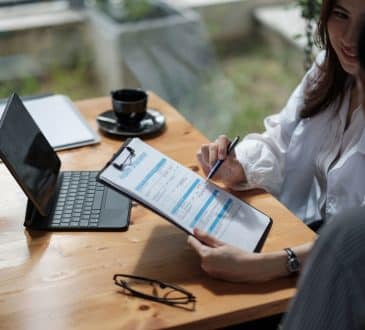How to Lead in Today’s Business Environment

Claire has been in her role for 5 years. She is an expert executor who is highly valued by her manager and many others in the organization who rely on her expertise. Yet, Claire is frustrated that she isn’t getting promoted. She would like to step up to the next level and doesn’t understand what she is missing. She knows her area. She delivers great results. She feels she “deserves” that promotion. Claire came to me to ask what was missing as well as whether it was time for her to leave the company for a place that would promote her.
What Claire is missing is an understanding that executing isn’t only what the next step in rank is about. Instead, upper management is looking for someone who understands their area as well as someone who isn’t always stuck in the details, who can create leverage and who can gain the confidence of senior stakeholders. Claire needs a new understanding of her role as a leader.
The Demise of the Generalist
The proliferation of high-ranking experts in the corporate landscape is a relatively recent phenomenon, the outcome of growth in a knowledge economy, leading companies to provide increasingly technical solutions and advice. As a result, companies no longer want their rising leaders to be “generalists.” Generalist implies that as you move upward, you need to become a jack-of-all-trades, a manager who knows a little of this and a little of that. The promise of generalism was that companies would grow cadres of managers with “fungible” skills who could lead anything and could be dropped into any business as needed. The assumption was that a given business’s specific context was either easily learned by these generalists or irrelevant to the task of leading people.
A New Breed of Leaders
Today most employees in a knowledge driven business resent a new leader who knows nothing about their technical specialty. HR executives in many companies will tell you that it is no longer even feasible to create career paths to groom generalists for top leadership since many managerial slots are simply not suitable for people who bring mere management skills. Deep technical knowledge is needed and valued. Consequently, leaders today must learn to lead at times as the expert and at times as a non-expert – that is as a leader who spans across knowledge domains.
In its ideal form, Expert or E-leadership is a potent combination of thorough knowledge in a given field and a clear concept of how that knowledge can and should be applied to improve team performance. Teams value coming to an E-leader for help solving very deep problems, and managers love knowing that E-leaders thoroughly understand the details in their area. This knowledge is essential for controlling quality and risk. However, these are not first-time leaders – they often lead managers of teams.
However, when E-leaders develop strong teams with depth, they are then asked to increase their leverage. Trouble often ensues because E-leaders haven’t learned to delegate, step away from the executional details and let others make decisions independently. The solution isn’t about abandoning expertise, instead it requires learning to span across domains without expertise. This solution calls for a new question: How much time should the leader spend leading as an expert and how much time as a spanning leader?
Developing a New Mindset to Move Out of the Comfort Zone
E-leaders are comfortable in the value they bring to the team and the organization, their confidence is usually strong because they know their content thoroughly. Their networks are usually defined by people who tap their knowledge and experience. And they tend to avoid most organizational politics by sticking to their knowledge base, letting their work speak for itself, and delving into the details to resolve disagreements.
When E-leaders move to a broader role, they need to gain basic competence in dozens of areas without having to become expert in every aspect. It takes a new mindset about how to lead and a different approach to understanding how you are adding value to an ever-growing set of responsibilities over which you have little detailed knowledge.
Contrary to popular belief, deep technical leaders, what many call “Hi Professionals,” can learn to become effective spanning leaders if they are shown the nature of the transition being asked and given support in shifting their approach.
What The Best Leaders Bring to The Job
Every leader needs to understand how to add value to the job, how to get the right work done, and how to interact with people. What sets superb leaders apart is their mind-set about what each of these elements mean—in other words, the mental model about what great leaders do.
Adding Value
Expert leaders add value to the company and the team through their knowledge, wisdom, and sense of responsibility for protecting the company. Their work is detailed, accurate, and focused on solving deep problems. Their interactions across the organization are based on the credibility of their expertise and the information they possess. Superiors, peers, subordinates, and outside observers of the company expect the E-leader’s decisions to be within a well-defined scope and to be based on a thorough assimilation of the details, extensive content knowledge and experience, and strict application of logic. An E-leader’s tangible contributions often include an ability to cut through the bureaucracy and get to the heart of an issue that solves a customer problem, a talent that can be extremely valuable to the company.
When leading beyond their expertise, that is as S-Leaders, managers need to understand enough to see how the pieces fit together, rather than trying to know everything the technical experts know. Value comes from the breadth of knowledge not the depth and from the network the S-leader can tap to help the team access information, raise their profile and resolve conflicts. As one seasoned S-leader put it: “As I became more of a spanning leader, I retained my understanding of how things work but I lost the need to dip into the day-day detail of the work.”
Getting (the Right) Work Done
Within the getting-the-work-done rubric, there are five elements that are characteristic of E-leaders: controlling from the center, relying on professional skills and contacts, drilling deeply, deep focus and concentration, and getting the right decision. In other words, setting clear, unambiguous targets and staying focused on them without worrying about other aspects of the business or spending time with people outside their area.
When leading beyond their expertise, managers lead more by influence than by telling people what to do. Team members need to see the S-leader as an assimilator, synthesizer, and integrator of information. They want to take part in that integration process and to see it working. They expect the S-leader to get buy-in for initiatives through a process of consultation and discussion, and for decisions to happen at the end of a well-understood, participative process.
S-leaders have to find people who can do the work, and then trust them. S-leaders are not generalists – they must know some essential things about the work being done by their team, just not all of the details. They use their wisdom and network to verify that their team is on tract.
How You Interact
Fundamentally, as an E-leader, you trust yourself, or someone just like you, to do a good job. For E-leaders, conversations most often rely on rational arguments and facts, quirky personalities are accepted, and people follow you because of your specific knowledge.
S-leaders must be comfortable working with and leading people who know more than they do and who have a broad range of personalities and styles. Their work is enabling the team, not doing the work. As a result, S-leaders must become skilled at influencing others with more than logic. Their relationships, not their depth of knowledge, become how they get work done and achieve goals.
Stepping Out of Your Comfort Zone
Now that we have assessed both forms of leadership, you can probably see that few managerial positions are strictly one or the other. Your current position is no doubt some sort of mix, as are any positions you may aspire to.
Given the differences between E- and S-leadership, how do you build up the nuanced, complex leadership capacities that are necessary for a move from leading as the expert into S-leadership?
Here are a few important questions to look at:
- What is your value as a leader?
- How much of that leadership value is based on expertise and how much on the intangibles of S-leadership?
- Should you seek to change the proportion of the two types in your present position?
- If you are currently in an E-leader position and are hoping to shift the balance to more S-leadership, are your team members ready, or can they get ready, to be the experts?
- If you are looking at a new job that is more heavily S-leadership, what capabilities do you need to acquire to succeed? What changes will you need to make in how you think about your role?
- Are you ready for the challenges of getting out of your comfort zone?
- Who will help you?
Answering these questions will help you think about the next step in your career and it will help you define where to put your energy along with the area you most need to develop. Talk with your mentors. Get advice from people around you. Don’t expect figure it out all by yourself.
Written by Dr. Wanda T. Wallace.
Have you read?
What is the future of the metaverse? Probably not what you think by Lu Zhang.
Three Reasons Why Many Leaders Are Afraid Of The Future by Dr. Oleg Konovalov.
Leaders, do you know what your GPS of success are by Dr. Jefferson Yu-Jen Chen and Anne Duggan.
How Can You Increase Productivity in 2023? Be Less Busy by Brian Wallace.
How Culture Wins by Leo Bottary.
Bring the best of the CEOWORLD magazine's global journalism to audiences in the United States and around the world. - Add CEOWORLD magazine to your Google News feed.
Follow CEOWORLD magazine headlines on: Google News, LinkedIn, Twitter, and Facebook.
Copyright 2025 The CEOWORLD magazine. All rights reserved. This material (and any extract from it) must not be copied, redistributed or placed on any website, without CEOWORLD magazine' prior written consent. For media queries, please contact: info@ceoworld.biz











